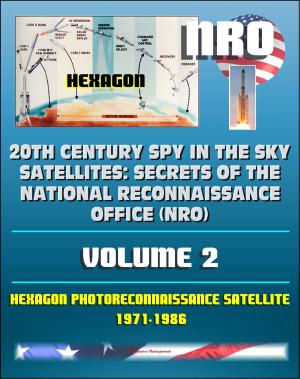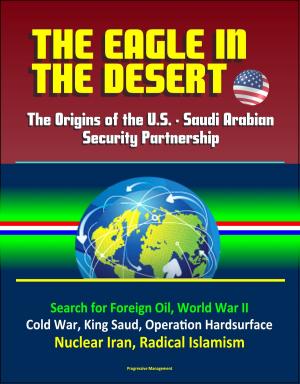Engineering the Organization: Is the U.S. Army Corps of Engineers (USACE) Doing it Right? The Army Engineer Brigade, Project Management and Cost Growth, MILCON and Military Construction
Nonfiction, Science & Nature, Technology, Construction & Construction Trades, History, Military, United States| Author: | Progressive Management | ISBN: | 9781370890026 |
| Publisher: | Progressive Management | Publication: | March 1, 2017 |
| Imprint: | Smashwords Edition | Language: | English |
| Author: | Progressive Management |
| ISBN: | 9781370890026 |
| Publisher: | Progressive Management |
| Publication: | March 1, 2017 |
| Imprint: | Smashwords Edition |
| Language: | English |
This excellent report has been professionally converted for accurate flowing-text e-book format reproduction. What is the most effective district structure to reduce cost growth of military construction projects for the United States Army Corps of Engineers?
Leaders assess the requirements for the organization when designing the management structure. The structure determines how the organization manages their business processes. The current structure of the USACE districts contributes to project cost growth and additional costs to combatant commands, service component commands, and local installations. The additional project costs prevent customers from using funds for other projects, causing a hostile relationship between the customer and the district. The fear of project growth causes customers to choose different administrating agents on projects where USACE does not have primacy.
The USACE districts' primary function for military construction projects is project management. Army engineer brigades also conduct project management, but experience less project growth. While the USACE matrix structure contributes to cost increases, the Army engineer brigades' hybrid structure reduces the opportunity for growth by regulating the span of control, establishing differentiation of managerial levels, horizontally integrating the employees, managing employee specialization, and centralizing control of the employees. Assessing the organizational structure through the project selection, planning, design, and execution phases demonstrates how the USACE districts could benefit from a hybrid structure like Army engineer brigades.
The first chapter introduces the four most common organizational structures used today. To prevent confusion among the various theorists, the paper uses the terms functional, self-contained units, matrix, and hybrid to describe the organization types. The chapter outlines that functional organizations contain stovepipes of specialists, self-contained units benefit from having all information under a single manager, and the matrix organization uses a project manager and functional managers to control projects. Finally, it describes the idea of a hybrid organization, one that takes aspects from other organizational types and combines them to achieve the best results.
Chapter Two documents how the organizations control cost growth on projects. It reviews the organizational structure of USACE districts commanded by colonels and provides insight into the USACE districts' cost growth problem. The chapter also evaluates the structure of active duty US Army engineer brigades as an example of a hybrid organization with functional advisors to the commander and self-contained organizations to develop projects and reduce cost growth.
Chapter Three compares how the USACE districts and Army engineer brigades control cost growth during the selection and design of projects. It describes how the organizations distribute the processes needed during this phase. Chapter Four reviews how the organizations monitor and control projects during construction with a focus on reducing the opportunities for project growth. The USACE districts' incorporates intricate processes during the construction phase to comply with the fiscal limits imposed by the government, while the US Army engineer brigades follow self-imposed rules to prevent cost growth during construction.
This excellent report has been professionally converted for accurate flowing-text e-book format reproduction. What is the most effective district structure to reduce cost growth of military construction projects for the United States Army Corps of Engineers?
Leaders assess the requirements for the organization when designing the management structure. The structure determines how the organization manages their business processes. The current structure of the USACE districts contributes to project cost growth and additional costs to combatant commands, service component commands, and local installations. The additional project costs prevent customers from using funds for other projects, causing a hostile relationship between the customer and the district. The fear of project growth causes customers to choose different administrating agents on projects where USACE does not have primacy.
The USACE districts' primary function for military construction projects is project management. Army engineer brigades also conduct project management, but experience less project growth. While the USACE matrix structure contributes to cost increases, the Army engineer brigades' hybrid structure reduces the opportunity for growth by regulating the span of control, establishing differentiation of managerial levels, horizontally integrating the employees, managing employee specialization, and centralizing control of the employees. Assessing the organizational structure through the project selection, planning, design, and execution phases demonstrates how the USACE districts could benefit from a hybrid structure like Army engineer brigades.
The first chapter introduces the four most common organizational structures used today. To prevent confusion among the various theorists, the paper uses the terms functional, self-contained units, matrix, and hybrid to describe the organization types. The chapter outlines that functional organizations contain stovepipes of specialists, self-contained units benefit from having all information under a single manager, and the matrix organization uses a project manager and functional managers to control projects. Finally, it describes the idea of a hybrid organization, one that takes aspects from other organizational types and combines them to achieve the best results.
Chapter Two documents how the organizations control cost growth on projects. It reviews the organizational structure of USACE districts commanded by colonels and provides insight into the USACE districts' cost growth problem. The chapter also evaluates the structure of active duty US Army engineer brigades as an example of a hybrid organization with functional advisors to the commander and self-contained organizations to develop projects and reduce cost growth.
Chapter Three compares how the USACE districts and Army engineer brigades control cost growth during the selection and design of projects. It describes how the organizations distribute the processes needed during this phase. Chapter Four reviews how the organizations monitor and control projects during construction with a focus on reducing the opportunities for project growth. The USACE districts' incorporates intricate processes during the construction phase to comply with the fiscal limits imposed by the government, while the US Army engineer brigades follow self-imposed rules to prevent cost growth during construction.















